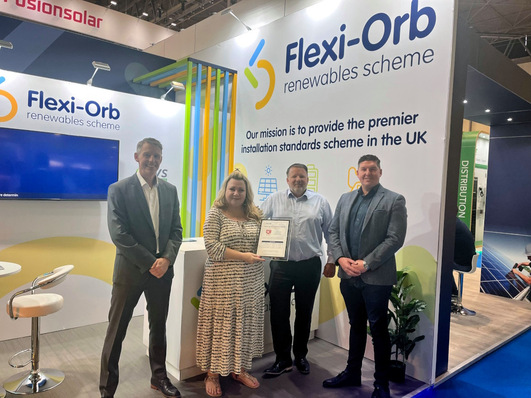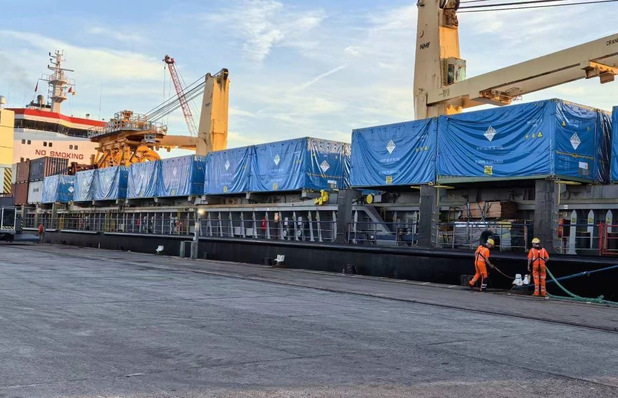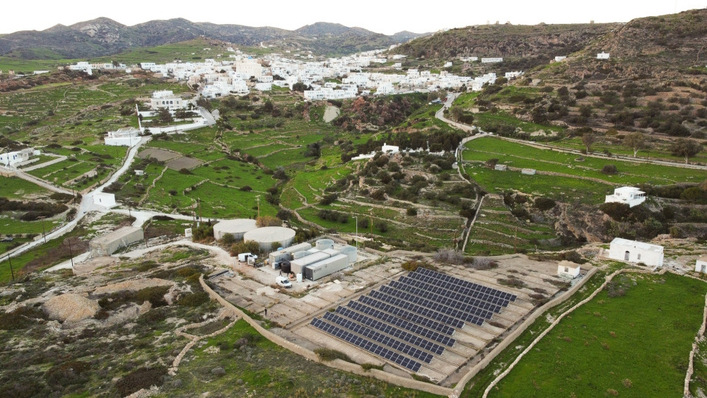The European Union is stepping on the gas in the energy transition. According to the REPowerEU plan, the share of renewable energies in the energy mix is to be increased to 45 per cent across Europe by 2030. Renewable generation plants with a capacity of 1,236 gigawatts are to be installed in Europe by then, the vast majority of them photovoltaic and wind power. Complementary energy storage systems will become all the more important to balance their weather-dependent, fluctuating generation, use renewable electricity as efficiently as possible, and ensure a stable supply and stable grids. "Storing renewable energy is the main way to stabilise a decarbonised grid," underlined Iñigo Cayetano, ESS Product Manager at Sungrow Ibérica, introducing the pv Europe webinar entitled "Battery Energy Storage Systems (BESS): Worth the hype“.
Also interesting: Global energy storage market: 15-fold growth by 2030
In any case, it became clear during the virtual expert talk that various types of energy storage are needed. In addition to battery storage, other types of storage, such as gravity energy storage and green hydrogen, are also required; however, BESS play a central role and are worth the hype. For example, larger BESS enable balancing of fluctuating generation and load peaks over several hours through energy shifting, curtailment and what is known as firming. In this way, they can also help stabilize the power grid and open the possibility for various ancillary services.
Different applications and configurations
Consequently, BESS systems need to be integrated into the existing grid, but how can we achieve this? AC-coupling is a suitable option for parallel connection with existing PV and wind power plants, or for working in Stand-Alone mode and supporting the grid. In this case, specific Power Conversion Systems (PCS) for storage are used. On the other hand, for the combination of BESS with new PV systems, DC Coupling is an option. Hybrid PCS are used here, which allow to charge the batteries directly from PV panels, improving the efficiency of the process, at the same time that PV power is injected into the grid. Furthermore, when batteries are charged, both PV and BESS power can be exported to the grid. The main advantage of this solution is that equipment, i.e. money is saved, thus reducing the CAPEX for a larger PV system with connected BESS. "However, it is important that this is already taken into account in the design of the plant," Iñigo Cayetano underlined.
Here you can find the recording of the webinar.
Sungrow, originally an inverter manufacturer that now offers a wide range of different PV components and systems from Floating PV to charging equipment to renewable hydrogen production systems, has more than 10 years of experience in BESS. By the end of 2022, BESS with a total capacity of more than 7 GWh had been shipped. Sungrow started the BESS business together with Samsung SDI before the Koreans set up their own battery production and Sungrow entered the development and production of its own BESS with air cooling. Last year, the Power Titan with liquid cooling was introduced as an innovative battery system for utility-scale storage. The ST2752UX has a capacity of up to 1.4 MW/2.752 MWh for 0.5C for two-hour and 0.25 applications for four-hour energy storage. It also has integrated DC/DC inverters. Another Power Titan variant is the ST2236UX with 2.2 MW/2.236 MWh for 1 C applications, primarily for grid stabilization with a 1-hour storage duration.
Liquid cooling enables a more compact design
The liquid cooled system of the Power Titan enables a more compact design with a container size of less than 40 Ft, which reduces the space requirement by more than 30% compared to an air-cooled solution, as well as a plug-and-play system for the individual battery racks, which are manufactured and tested by Sungrow in its own factories and delivered as a complete system in a container. In addition, the liquid-cooling system provides better temperature control compared to BESS with air-cooling, which is essential for lower degradation during battery life and offers the advantage of lower auxiliary power consumption. In addition, the better temperature control allows to optimize the capacity by 7% and improve the round-trip efficiency by almost 3%. This data is based on a 50 MW/100MWh plant comparison.

Sungrow
Overall, this allows a reduction in annual O&M costs (compared to air cooling systems) of over 1 million euros, according to Sungrow. It also reduces energy consumption by 40% and increases service life by 10 per cent. Overall, the total system cost (LCOS) can be reduced by about 20% per cent. Another aspect is comprehensive safety protection. Among other things, an AI-powered cell health monitoring system is integrated that monitors cell safety in real-time and gives early warnings. A current breaking within microseconds reduces the overcurrent risk on the DC side. Also integrated is a system fire system design that meets the stringent safety standards of North American NFPA 855/69/68/15.
Stable operation also in weak power grids
For high grid capability, the Power Titan complies with LVRT and HVRT requirements without disconnecting from the grid, and stable operation in weak power grids with an SCR (Short Circuit Ratio) higher than 1.018 is enabled. For the active support for the grid, they have a 20-millisecond quick response in VSG working mode. Off-grid support is also enabled, including the black start function.
In addition to the batteries on the DC side, suitable power stations are available for connection to the medium voltage grid. The Power Stations are available in various designs and sizes, from 20 ft PCs and 2.25 MW up to 6.9 MW, 40 ft Power Stations.
Essentially, Sungrow assemblies, designs and manufactures the whole BESS system, incl. the battery management system, offering a complete turnkey solution for utility size projects.
Additionally, Sungrow also offers the Power Stack as a BESS solution for the C&I area, based on the Power Titan (2 Power Racks). In addition, various modular BESS equipment for the residential sector (1-3 phase hybrid inverters, scalable batteries, EV chargers) are also included in Sungrow’s portfolio.
Integrated heating system compensates temperature differences
The subsequent round of questions focused on the Power Titan, including the costs per MWh. According to Iñigo Cayetano, these are largely determined by the recent sharp fluctuations in the price of lithium. Because of high electricity prices, Iñigo Cayetano said, several business cases around large-scale storage applications with the Power Titan are profitable, such as energy shifting applications. Currently, one has to reckon with an 8-month delivery time on site for the Power Titan.
Did you miss that? Several hundred MWh energy storage systems for Israeli projects
And up to what sub-zero temperatures can the Power Titan be used, for example in the Nordic winter, without major losses in efficiency? Down to at least minus 30 degrees, says Iñigo Cayetano, because the integrated heating system compensates for the temperature differences and prevents the batteries from cooling down too much. The lifetime of the batteries generally depends to a large extent on the number of charging cycles, as he explained: for example, their lifetime is 10-12 years with 2 charging cycles a day, 13-15 years with 1.5 charging cycles a day, and 15-20 years with one daily charging cycle. He sees further optimization of the layout for an even more compact design with a 20 ft container as a key lever to optimize the Power Titan even further.
Here you can find the recording of the webinar.
Hans-Christoph Neidlein








